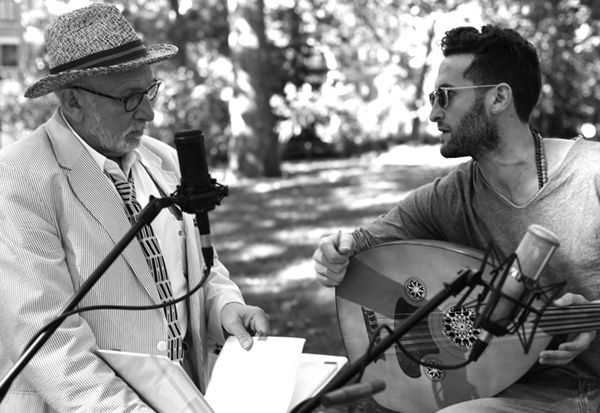We recorded the Torah
Published March 22, 2017
I spent the year of 1976-77 as student in Jerusalem. There I was introduced to the oud, the double course, 10- or 11-string ancestor to the lute, the microtones that distinguish the music of the eastern Mediterranean articulate on the fretless neck of the instrument. L’oud moved around the Mediterranean and into Europe and became the lute.
In 1995 I took a sabbatical and studied oud with a master. He introduced me to the maqams, in Arabic maqamat, Hebrew maqamim. The maqamat have many implications, some musical some extra-musical.
A maqam is a musical figure, a kind of modal form, characterized by certain relations of notes, some closer together than two adjacent keys of a piano, that are known as micro-tones. They are a musical substructure underneath Middle Eastern music, a sound common to all people of the Middle East. I felt as if I was playing the music of Abraham, before the separation of Isaac and Ishmael, Arab and Jew.
About 10 years later, I discovered that in the Jewish tradition, there were communities that connected a maqam with a particular Sabbath and so a distinct part of the Torah. I was obsessed by the oud and inspired by the tradition to connect the teachings of the Torah with a musical form.
During my most recent session with my teacher, in July 2012, I injured myself so I spent much of my time laid out on the floor in a hotel overlooking the Old City of Jerusalem. I played lying on the floor, often sleeping in fever with an oud I had borrowed at my side.
I shared my obsession and inspiration with my old friend Zach Fredman. I have known Zach since he was a little boy. Zach had grown up and acquired the oud obsession, much exceeding my ability on the instrument. He had also become a rabbi. From Jerusalem I wrote to him and Zach responded: Why don’t we put the pieces you wrote and the maqams together? Let’s record them. Let’s create a new form.
I wrote this in my journal that summer from the floor of the hotel:
I have entered into an adventurous challenge project today, presented it to my collaborator and am delighted to begin not knowing at all where it will lead if anywhere.
By this time Zach had deepened himself in the traditions of maqam. He was serving The New Shul, a synagogue community in New York, which sponsored a year of videos featuring one of my pieces and the music Zach put together to correspond to each weekly Torah reading.
We recorded the pieces live all over New York City with some of the best musicians in New York called The Epichorus. We recorded the Torah, one piece for every portion, original music and poetry, the music of Abraham before the separations.
Thus, The Maqam Project. In its first incarnation, we recorded the entire Torah. We posted the videos on the web: themaqamproject.com. Zach and I then worked the audio of the pieces that were dearest to us and that is what we created: We call it L’Oud and the Abstract Truth. We recorded the Torah.
Rabbis Zach Fredman, James Goodman and the Epichorus Live will present “L’Oud and the Abstract Truth” from 2 to 4 p.m. Sunday, March 26 at the Jewish Federation, 12 Millstone Campus Drive. Their presentation is the Saul Brodsky Jewish Community Library’s Annual Morris and Ann Lazaroff Lecture.
















